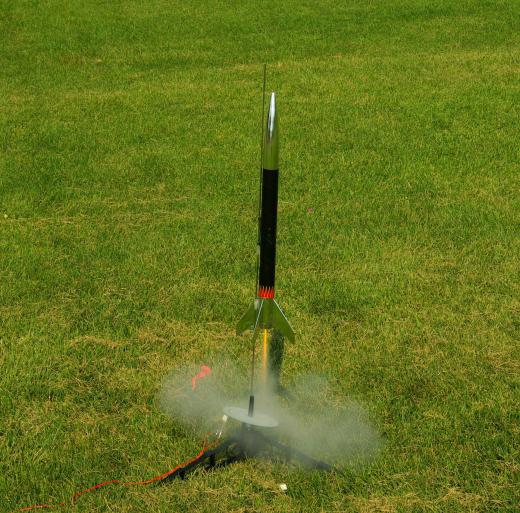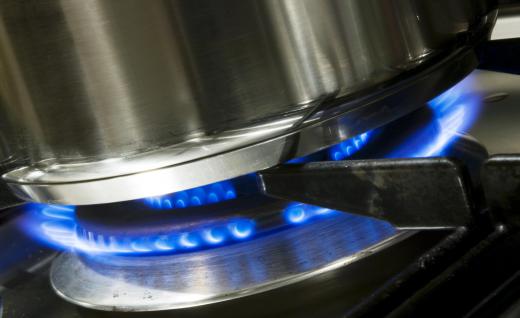An electric match is a contraption that lights a combustible element by using a current of electricity as ignition. It primarily consists of a short segment of slender, covered wire, which comes in a variety of lengths. One end is inserted into the item to be ignited while the other rests on the outside. External ignition of the outside end of the electrical match lights the attached item by moving the current through the wire attached to it. Electric matches can be used to light items such as appliances, various types of pyrotechnics and rockets.
There are two primary parts to an electric match, one that starts the fire and another that conducts the fire. The bridgewire contains the heating element that ignites the match. It is a thin piece of wire, which is usually in either a coil or loop shape. The fire conductor is known as pyrogen. It wraps around the bridgewire, and is made of a material which will ignite in reaction to the current from the wire. In some instances the pyrogen is constructed so that it can conduct energy on its own, thus taking away the need for a bridgewire.

The electric match is ignited by an external source of electricity. It works through a concept called resistive or Joule heating, where the conduction of electricity through a wire causes the release of heat. If the voltage is high enough, it will set the pyrogen on fire, which will in turn spread to the attached item and ignite it as well.
Many different types of items can be ignited with an electric match. It can be used to ignite consumer items such as barbecues, gas stoves or natural gas fireplaces. The matches are also used to ignite pyrotechnics, such as fireworks. Other uses include airbag deployment, ignition of commercial or military explosives, and the deployment of model rockets.

Electric matches can light easily and should be handled with care. Both ends of the match are extremely sensitive. The ignition portion can be lit with a light slap or by being slammed against another object. The pyrogen can also ignite simply by being pulled roughly out of a flammable item into which it has been inserted.
Electric matches can be both purchased and homemade. The commercial variety is usually sold in bundles of several matches. They can only be bought with a special license. While it is legal to make the matches without a license, the process of making and using them is quite dangerous and should be approached with extreme caution.
